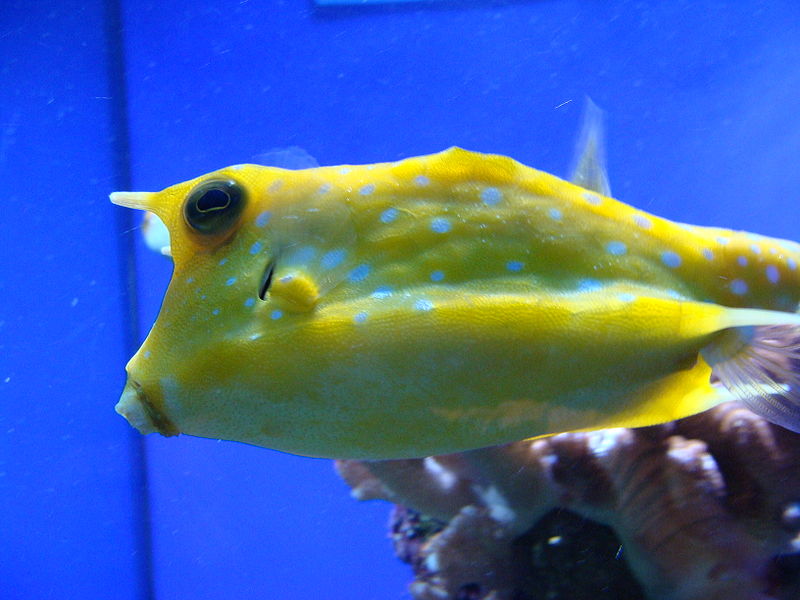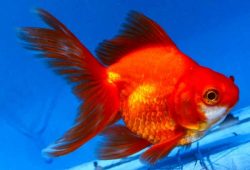Aquarium Boxfishes and Cowfishes
In the article you will find some basic information on Aquarium Boxfishes and Cowfishes.

Contents
Fascinating Tropical Marine Aquarium Fishes for Expert Aquarists
The so-called pufferfishes are ubiquitous in the world’s oceans, perhaps owing to their limited number of predators. You can find them in tropical and temperate seas worldwide, and more than a few species make their way into the marine aquarium trade.
Some of the Most Unusual Saltwater Fish
The Order Tetraodontiform includes some of the most unusual looking saltwater fishes such as the triggerfishes, filefishes, leatherjackets, trunkfishes, puffers, boxfishes, and cowfishes. Within the suborder Tetraodontoidei, there are two families of fishes that are popular aquarium fishes—the triggerfishes (Family Balistidae) and the subject of this article, the Family Ostraciidae (from the Greek ostrakon for “shell”).
Fishes from this family are commonly known as the boxfishes, cofferfishes, cowfishes, and trunkfishes. Currently there are twelve accepted genera in two subfamilies, with puffers from the genera Ostracion (boxfishes) and Lactoria (cowfishes) being the most popular and frequently offered.
Buyer Beware! Ostracitoxin
Before getting into the species themselves, it’s worth noting that members of the Family Ostraciidae do have an infamous secret weapon—ostracitoxin. This is a toxic discharge the fish can release from its mucous glands when stressed, and it is more than capable of wiping out an entire system. In particular, use caution around species from the genus Lactoria. With appropriate acclimatization, husbandry and tankmates, however, there should be no problems. Nonetheless, it is something about which every marine aquarist should be aware.
The Whitespotted Boxfish
To many aquarists, the peaceful whitespotted boxfish (Ostracion meleagris) is the boxfish. Alternatively called the spotted boxfish, blue boxfish, or black boxfish, this species is only appropriate for the expert aquarist. It is a beautiful fish from the Indo-Pacific and Eastern Pacific that grows to about eight inches in captivity. In the Hawaiian Islands, O. meleagris is replaced by the subspecies O. meleagris camurum and in the Eastern Pacific by O. meleagris clippertonense. O. cyanurus is the Red Sea species. One of the most striking attributes of this species is the difference in coloration between the male and female (dimorphism).
The male, called the blue boxfish, is a striking blue color with rust-colored spots, while the female, called the black boxfish, has a black body with white spots. Keeping a pair together in an aquarium of at least 135 gallons makes for an absolutely stunning display. A single whitespotted boxfish should not be kept in an aquarium under 75 gallons. Boxfishes can only be considered reef compatible with extreme caution, as they regularly feed on small sessile invertebrates (and algae).
Plan to spend between $30 and $70 depending on sex and size.
The Longhorn Cowfish
While not considered as difficult to keep as the whitespotted boxfish, the longhorn cowfish (Lactoria cornuta) should still only be kept by highly experienced aquarists. A peaceful fish from the Indo-Pacific, the longhorn cowfish needs a peaceful community tank of at least 100 gallons, as it can grow to 16 inches in the aquarium. Its coloring ranges from green to orange with blue spots, and it is readily identifiable by its namesake “horns.”
The longhorn cowfish is known to be an exceptionally long-lived fish if its basic needs are met. It feeds primarily on benthic invertebrates, and will spend its day blowing away the substrate in search of meals. It will also consume algae and does best in a mature aquarium. Like other puffers, it cannot be considered reef compatible.
Plan to spend between $20 and $140 depending on size and sex.
Final Note on Feeding
A final note on feeding—it is not uncommon to have difficulty weaning boxfishes and cowfishes onto a captive diet. Try live adult brine shrimp (preferably gut loaded) to induce a feeding response until the fish adjusts to a captive diet. Then feed a varied diet consisting of large chunks of meaty marine foods including krill, raw table shrimp, squid, clam, and mussel. Supplement with an herbivore food at least once a week.



